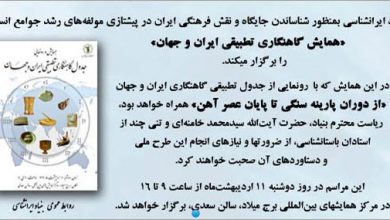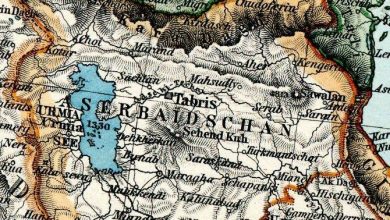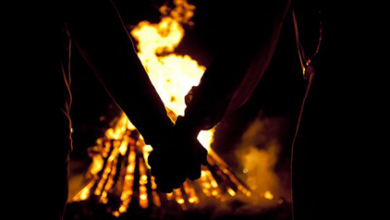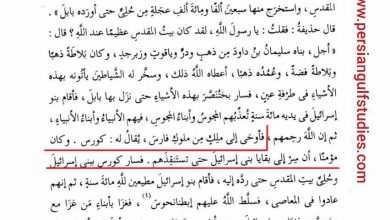Different types of Iranian women in contemporary stories
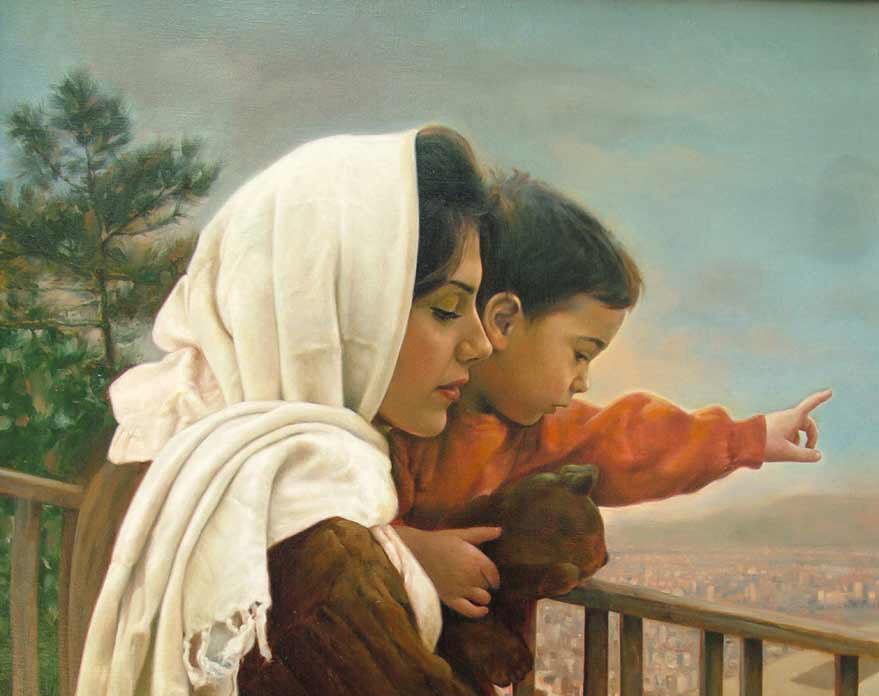
From the time when Shahrzad used to tell stories about women's trickery, increasing the chaos of Shahryar's heart, until today this strange and multifaceted creature, who shows new spectrums of his personality by shining different lights on him, in The stories have taken over and without his presence, the storyteller should think of another Chinese introduction to give color and smell to his writing.. Women of a thousand and one colors and a thousand and one nights, Madame Bovary, Anna Karenina, Hitchcock's blonde and black women, introvert and oppressed or oppressed women of our contemporary writers have depicted various faces of women for us.. The oldest and most enduring role that women have had in stories has been the role of motherhood. “woman - mother” It has almost the same presence in men's and women's stories. Maybe the female storyteller because of feeling “You are the same” With the mother of his story, he gives a different quality to the story, but in his basic sense, he is not much different from the male storyteller. Due to the instinctive nature of the issue, culture and geography, like gender, do not have an important effect on the creation and understanding of maternal feelings.
“Female – Mother” It is present as a central or secondary role in most of the stories. One of the most memorable ones is "Zari" in the book “Sushon” It is written by Simin Daneshvar, who has almost all the classic features of this type of woman. In the mother's view, the family is the most important axis of a woman's thoughts. Man (Husband) And the children leave no room for the rest of his preoccupations, and the woman interprets all the events around her from this point of view.. In many cases, the mother's umbrella covers the man as well. On page 47 of the book, Yusuf, who is tired, sits on the sofa and Zari kneels on the ground facing him and takes off his boots..
Female – With introversion and foresight, the mother plays an important role in maintaining the family center and creating its stability and peace.. He predicts events with his instinct before logic. He tries to provide peace to others, even at the cost of his own internal turmoil. In cases where a danger threatens the family through him – Like forbidden love- Being a mother keeps her connected to the family more than being a wife. "Clarice" by Zoya Pirzad or the narrator of "Forbidden Notebook" written by Alba Dess Pedes depict other examples of family-centeredness..
Secret management of affairs, being patient, waiting, secretiveness, rough or kind hands and so on … It is one of the characteristics of a woman-mother. A woman's beauty is evaluated in terms of her tenderness and kindness, and it is not of primary importance.
All women writers sometimes approach the maternal role, even if the dominant woman in their stories plays another role, such as a role close to men.. “woman man” In Muniro Rouanipour's stories, due to having ideals and desires outside the family center, she shows another face of women.. One of the main characteristics of a woman – A man can be independent, looking for a way out of the existing situation, innovation, influencing the lives of others and … Cited. The opposite of a woman – Mother, family is not the main concern of such women. Most of them are looking for their perfection outside the family. In making love and in playing the role of a mother, they never completely forget themselves and deal with issues not only with other women's weapons, i.e. kindness, but also with management and intelligence.. "Legend" of the narrator of the novel “steel heart” Rovanipour's writing in his dealings with the house owner's addicted son, although he is close to maternal and even romantic feelings, but the woman – The man in her existence acts more decisively and takes the lead in the affairs. Female – A man is not too attached to his appearance, if he looks in the mirror, he wants to see how old he is to know how much time he has to accomplish his tasks.. His presence in the society is his most important characteristic, while the woman – A patient mother fulfills her role as a mother or wife of someone who has an important role in society. Female – Even if a man has a family, he does not limit his concerns to its axis, in stories “Frankfurt airport woman” We see such a woman a lot. Female – A man is unhappy with his status and may find female characteristics disturbing to change his status. He is not hostile towards men and even talks to them more than women.
In stories with an older social context, women – The mother has a more colorful presence, on the other hand, the more urban society brings women into newer jobs. In such a context, a woman even maintains her old role (Maternal role) Your independence with work, creativity and … He preserves and in a more exaggerated state shows his masculine characteristics and tries not to show his feminine emotions..
Another face that women have shown in stories for a long time is their very feminine face, which has always opened the way for romantic and burning stories, and sometimes openly for conflict and chaos and even burning cities.. Presence “woman - woman” In men's stories, it is more colorful and more established than other roles. But it is usually considered from an external point of view, and whether it is ethereal or earthly, it is a seditionist and the founder of chaos.. Such a woman is perceived in a different way by the reader in the eyes of female writers, among contemporary female story writers, Shiva Aristovii has acted with more courage and courage to such a woman.. Shahrazad of his stories is a woman who, in addition to trying to go beyond everyday life (like a woman- Man) It has also addressed its feminine features. Paying attention to beauty, fear of getting old, giving importance to love, relying on male strength and so on … One of the main characteristics of a woman – is a woman. In almost all the stories of the "Sun and Moon" collection, there is a romantic relationship – Not family- There is. In these stories, the woman realistically accepts her inherent characteristics and lives with them instead of fighting.. Even Shahrzad in the long story "The sky is not empty", who is a poet, a thinker and a seeker, we see many times in front of the mirror and many times he is at a crossroads.. There are men in her life that a part of her being is strongly dependent on them. Female – The man inside him pulls him towards independence and his very feminine half completes him. Nahid and Anahita in the story "The sky is not empty" are associated with these two parts, one is facing the sky and the other is strictly earthly..
In the stories of "Sun and Moonlight", this feminine feeling is intensified by emphasizing colors, dance, love and failure.. In the story of "Chinese food" we see the duality again. Woman in constructive position (Filmmaker and critic) And the woman in a feminine position. In the story "I became beautiful when I saw her" we are fully faced with female emotions. The background of the story easily provides the possibility of getting close to the motherly feeling. Another writer with a different thinking, in such a situation, the main role of the story is given to the woman – Mother gives, but in the Aristotelian woman's view, a romantic situation is easily formed. Because a woman in his eyes is a woman without an iota of pity. A woman who accepts all the lows and highs of her existence and shows her most natural and instinctive part by being aware of them and her needs in various situations.. If there is half of an artist in him (Chinese food, I came to have tea with my daughter, the sky is not empty…) It does not distort the other half.
Oppressed and oppressed women by men have been the source of many female writers in the last two or three decades. “Woman - oppressed” Sometimes it has been noticed by male writers as well. The story of Yorik Karim Masihi's "The Same Floor" which was published in a collection of the same name, looks like this.. But generally, this is the attitude of women writers, especially a group of them, whose rights are lost and the social position of women is their main concern.. Almost all female writers, even in a few stories or in a few small situations, make such a theme the main theme of their work, even if the woman they are interested in is of a different gender.. In the stories of "Devil's Stones", "Café Chi", "Kenizo" and even "Del Foulad" by Moniro Rouanipour, this issue has been paid attention to, although previously we mainly put Rouanipour's women in another category, the category Oh, those who walk on the firm ground, they know what they want, and they are not prevented by the cruelty of a single person in order to achieve their desire.. A woman's oppression sometimes has an opposing role, such as a cruel man, a dictator father, or a traditional family, and sometimes her physical and physical aspects are enough to keep her in a painful situation.. In the book "Behind the Row of Trees" written by Zohra Hakimi, a woman is always caught in one of these situations.. In the stories "Wandering White Cotton Cloud" and "Jasmine Flowers" we see the cruel man in the most classic form, and in stories like "Dard" and "I am unarmed" whose name is from the poetry collection of Khatereh Hijazi. The name "sorrow of being a woman" is borrowed, the inherent characteristics of a woman put her in a sad situation. In a story like "The Fall" written by Nosrat Masouri, being a woman's soul is depicted as sad. It is interesting to compare this point of view with the very feminine point of view of Aristotelian eloquence, who accepted female features easily and painlessly.. In the new story "Stairs" written by Behnaz Alipour, the presence of a pessimistic and suspicious man shows that the oppression of women is still of interest and will probably be the subject of countless stories for many years to come.. Such stories usually have a specific position and are far from the non-judgmental view Chekhov intended. In fact, the adopted position is the main motivation for writing this kind of story, and this takes the spontaneity and fertility from the story and gives it a dry and logical direction..
“woman - human” It is the last type that is discussed in this review. In this view, a woman is not placed in a different position from a man due to her gender and social status, she is seen as an entity that is of interest for a psychological or ontological reason, and whether she is a man or a woman has no effect on the story.. In these stories, the woman may be placed in a motherly, feminine and even oppressed position, but the main theme of the story is a topic beyond gender and confronts us with people and their mentality.. Going beyond bias and taking a deep look at man and his relationships, sometimes we face a story that we don't believe was written by a woman, such as the story "Escape" written by Catherine Mansfield, which in a superficial view, is a story against It looks like a woman or similar to the story "Wakefield" written by Natalie Hawthorne. In both of these stories, the man runs away from home. One to a house other than his own, but close to it, and the other to a corner of his mind where he has built another world for himself.. Closer to us than both of them is the story "Somewhere else" written by Gholi Tarqi, the man in this story also leaves his house and wife and leaves, but in none of these stories the gender of the person who runs away is as The motive of his escape, which is to escape from repetition and everyday life, is not important. The story "Nazdiki" written by Hanif Qureshi also repeats such a theme in another way, and the fact that the author and the narrator are male does not lead the story to a negative judgment about the woman with him.. What disturbs people inside is not the surrounding people, but an inner feeling that makes the small world of the story expand to a wider perspective..
We are faced with a lot of diverse women in Turkish folk tales. It is possible that most of them are included in the well-known types and can be categorized, but his general image of women is a human thing that is not affected by the narrator being male or female.. When the narrator of Turki stories is a man (In stories like Elsewhere, The Pear Tree and The Great Lady of My Soul) It is not important whether it is successful or not in creating a masculine tone, because we are facing a theme that does not have masculine and feminine.. The presence of types in the story make the storyteller's job easier and allow him to introduce the main and more complex characters, types such as the narrator's mother, who is a modern type of woman. – is mother (A woman with good financial means and stylish clothes and fragrant perfume, pretentious …)Pomegranate lady (The story of Anar Banu and her sons) and the motherland (The story of a house in the sky) A more classic example of a woman – They are mothers, Amina (The story of Amina's great journey) The example of a woman is oppressed and incendiary (The story of angels) Female example- Female. But none of these limit the author's view to the women's world, even if he speaks several lines about the lost rights of women in the story "Somewhere else". (Page 243) Let's not be careless, and even if we are aware that in many stories we are dealing with a woman who alone and powerfully manages her life and her children's life, and she is like the characters in the stories of Muniro Rouanipour in the category of women. – Let's make room, men. Along with these types, Targhi uses many exaggerated and strange people. These strange people (Mr. R, Mary Khanum, Little Friend, Mim in the story of the pear tree, Mr. Ghazni, Atash Afroz and …) With a fast rhythm and a narrator's breath and the repetition of some sentences and events, it creates a memorable atmosphere with sharp shadows, like a black and white animation with paintings that seem to have been drawn by a little girl, a lively girl and with Haihau, who is in her second life in Paris, is a woman with two children whose only words are past memories and she says nothing about the present except the boredom of life.. In the current life of this woman, there is no mention of her husband or the father of the children. Is it possible that we are faced with an oppressed type of woman? In that case, how impartially he weaves stories of heaven and earth for us! Stories from two worlds that can be clearly separated in almost all Tarqi works. A childish, simple and comfortable world (Shemiran's house) And the hard and gloomy world of adulthood (Paris) Is. The world is here and there. The world of people of the same class and similar, such as relatives and family friends, and the world of people of a different type and category, such as the little friend, Giti and her daughter in the story on the other side of the wall, the bus driver, the Indian man, Amina, Zainab in the story of the servant, Anarbanu and Crazy story of the first day. He is a merciless and judgmental narrator, his duty is clear with good and bad people, and from the beginning, the character entered into the story slows down and explores him, and in this context, there is no exception for friend or stranger, male or female. , even if he knows what their rights are and how close or far they are to their realization.
From: East newspaper
to the pen:Ferishte Ahmadi


